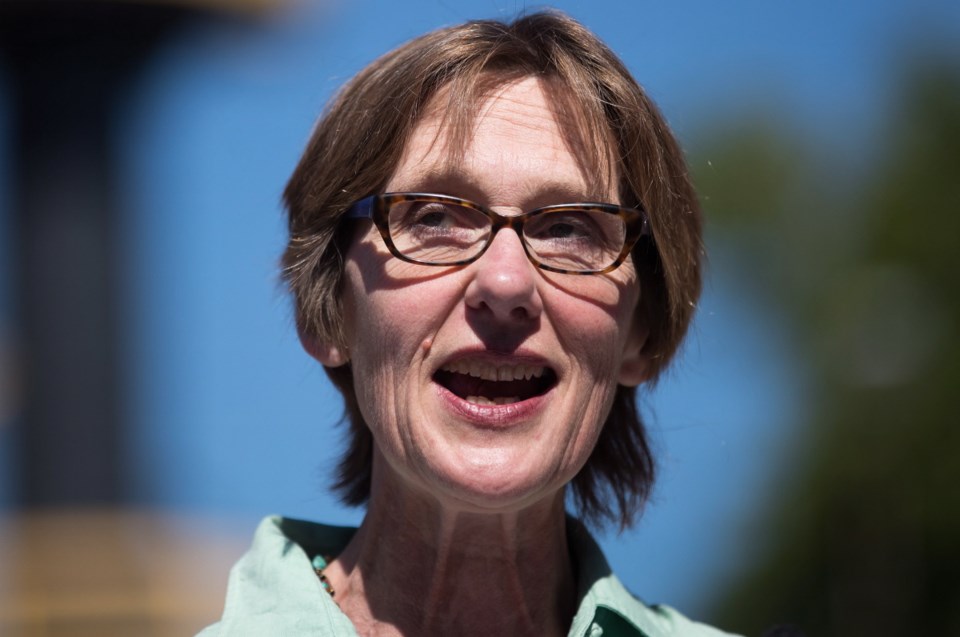If Greater Victoria’s business community was looking for insight and answers to the Island’s transportation issues, the Greater Victoria Chamber of Commerce’s lunch with the provincial transportation minister wasn’t the place to find it.
In a short speech, Transportation and Infrastructure Minister Claire Trevena touched on all facets of Island transportation, from vehicle bottlenecks and ferry systems to the Malahat and the E&N corridor. But on two of the most pressing issues — how should transportation infrastructure be governed and paid for — there was little new information.
Trevena, who on several occasions cited the well-worn notion that the Island has been ignored for years when it comes to transportation and infrastructure spending, reminded the crowd that her ministry launched the southern Vancouver Island transportation strategy this month to look into improving traffic flow.
But she also stressed that the exercise, which will look at current transportation demands and develop a plan for future investment, should not be confused with the myriad transportation studies undertaken over the years. “This is a plan, not another study,” she said in response to a question from Langford Mayor Stew Young. “It’s a strategy to work with the region to get the region moving.”
But as for Young’s question about a funding formula for transportation infrastructure in the region, she would not offer detail.
“For too long, the Island has been ignored. What we are doing with this plan is making sure the Island will be served and it will be funded,” she said.
Trevena’s insistence that the Island will get its transportation due left the head of the Chamber cold. “I was disappointed she didn’t seem focused on governance. We all know the problems. To say ‘we are having another study’ is not productive,” said Chamber chief executive Catherine Holt. “I know the minister very carefully said it’s a plan, not a study. But if it doesn’t deal with governance, it doesn’t matter what the plan is. That [lack of governance] is what’s paralyzed us forever.”
Holt said the Chamber hopes the province will establish a regional transportation authority — something like B.C. Transit with a broader mandate — that will have regional decision-making authority. “We need an authority that has tax-revenue power and a mandate to deliver improved transportation for the region ... we have nothing like that.”
Holt said she is taking Trevena at her word that if people keep talking about the need for a governance model, that the province will address it. “I would say we are raising it and would like as many voices as possible to raise it and say that is really the Achilles heel of transportation in this region,” she said.
Trevena, who told reporters the top priority for the Island is to get people moving, said the ministry will work with all of the municipalities and First Nations to get input for the south Island strategy, which it hopes to unveil this year.
As for the E&N rail corridor, she said the province is ready to invest with lasting infrastructure, and will work with First Nations and municipalities to find common ground on the best use for it.



